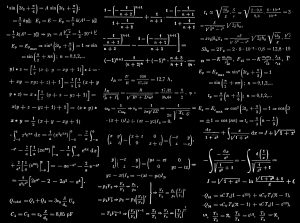Tips for Teaching Multiplication Tables to Kids

Are you a parent struggling to teach your child multiplication tables? Do you find it challenging to engage them and make the learning process enjoyable? Don’t worry, you’re not alone. Many parents face this hurdle when helping their children grasp the concept of multiplication. However, there are effective strategies and tools that can make the learning experience both engaging and effective. In this article, we will explore valuable tips for teaching multiplication tables to kids, with a focus on utilizing the abacus methodology. By incorporating these techniques into your teaching routine, you can unlock your child’s mathematical potential and set them up for success in their academic journey.
Understanding the Basics of Multiplication
To effectively teach multiplication, it is essential to start with the basics. Begin by introducing multiplication as repeated addition. Help your child understand that multiplication is essentially adding a number multiple times. For example, to solve 4 × 3, explain that it is the same as adding 4 three times (4 + 4 + 4). This concept helps children grasp the foundation of multiplication and lays the groundwork for further learning.
Another helpful strategy is using fact families. Start with smaller numbers and teach them in fact families, such as 0, 1, 2, and 3. This approach allows children to see the relationships between numbers and understand how they interact in multiplication equations.
Harnessing the Power of the Abacus Methodology
The abacus is a powerful tool that can aid in teaching multiplication tables to kids. Before diving into multiplication, ensure that your child is comfortable using the abacus for addition and subtraction. This foundational knowledge is crucial for their success in understanding multiplication.
The abacus provides a visual representation that helps children visualize multiplication problems. For example, to solve 3 × 4, have your child arrange 3 beads in 4 different rows on the abacus. They can then count the total number of beads to see that 3 × 4 equals 12. This visual representation helps solidify the concept of multiplication and enhances comprehension.
Practice Makes Perfect: Multiplication Worksheets and Flashcards
Regular practice is key to mastering multiplication tables. Incorporate multiplication worksheets and flashcards into your child’s learning routine. Create flashcards with multiplication problems on one side and answers on the other. This method encourages repetition and memorization. Use a timer to track progress and turn it into a fun challenge.
Additionally, encourage your child to chant the tables and write them out. Start slowly, then gradually increase the speed as they become more comfortable. This multisensory approach helps reinforce learning and improves retention.
Games and Everyday Applications
Learning multiplication doesn’t have to be limited to rote memorization. Make it fun and engaging by incorporating games and everyday applications. There are various math games available, both in physical board game form and online, that involve multiplication. These games provide an interactive way for children to practice their skills while having fun.
You can also involve your child in everyday situations that require multiplication, such as cooking or shopping. For example, ask them to double or triple a recipe or calculate the total cost of items at the grocery store. These real-life applications demonstrate the practical use of multiplication in daily life and make learning more meaningful.
Fostering a Positive Attitude and Tracking Progress
When teaching multiplication tables to kids, it is crucial to foster a positive attitude. Recognize that every child learns at their own pace and avoid using negative language or placing unnecessary pressure on them. Celebrate small achievements along the way to build their confidence and motivation.
Regular quizzes are a great way to assess your child’s understanding and retention. Conduct informal quizzes to gauge their progress and identify which tables need more focus. This approach allows you to tailor your teaching to their specific needs and ensure a comprehensive understanding of multiplication.
Teaching multiplication tables to kids can be challenging, but with the right strategies and tools, it becomes an engaging and effective process. By starting with the basics, harnessing the power of the abacus methodology, incorporating practice through worksheets and flashcards, utilizing games and real-life applications, fostering a positive attitude, and tracking progress, you can set your child up for success in mastering multiplication.
To enhance the learning experience further, consider enrolling your child in SIP Abacus courses. SIP Abacus offers world-class skill development programs that focus on developing mental math skills in children aged 6-12. Their curriculum incorporates the abacus tool and visualization techniques to make learning mathematics fun and interactive. Children who complete the SIP Abacus program perform significantly better in math and reading at school, often surpassing their peers by several years within just two years of joining.
Don’t let the challenges of teaching multiplication tables deter you. With these tips and the support of effective learning methodologies like the abacus, you can unlock your child’s mathematical potential and pave the way for their future success. Embrace this exciting journey and watch as your child confidently multiplies their way to mathematical mastery!



